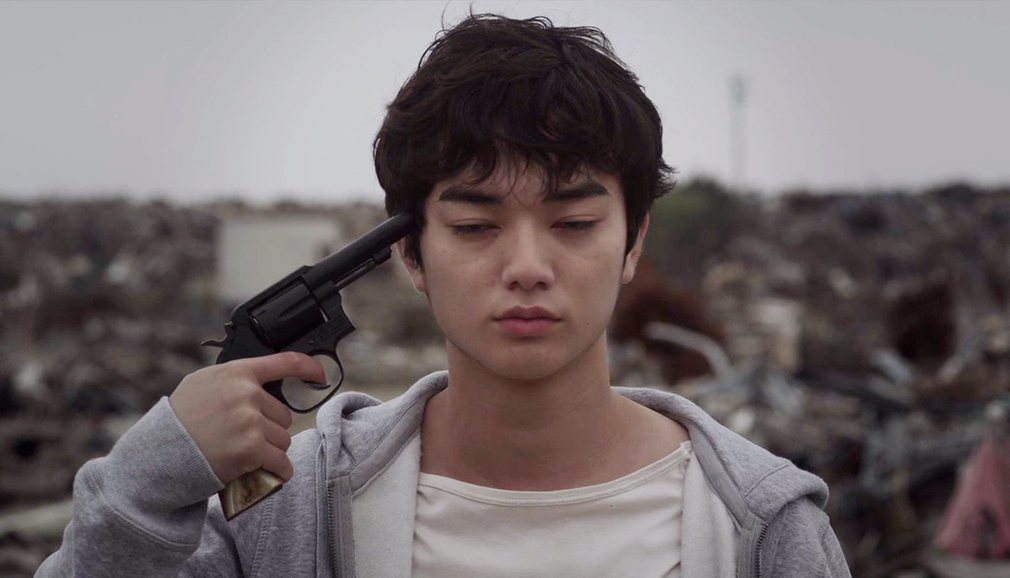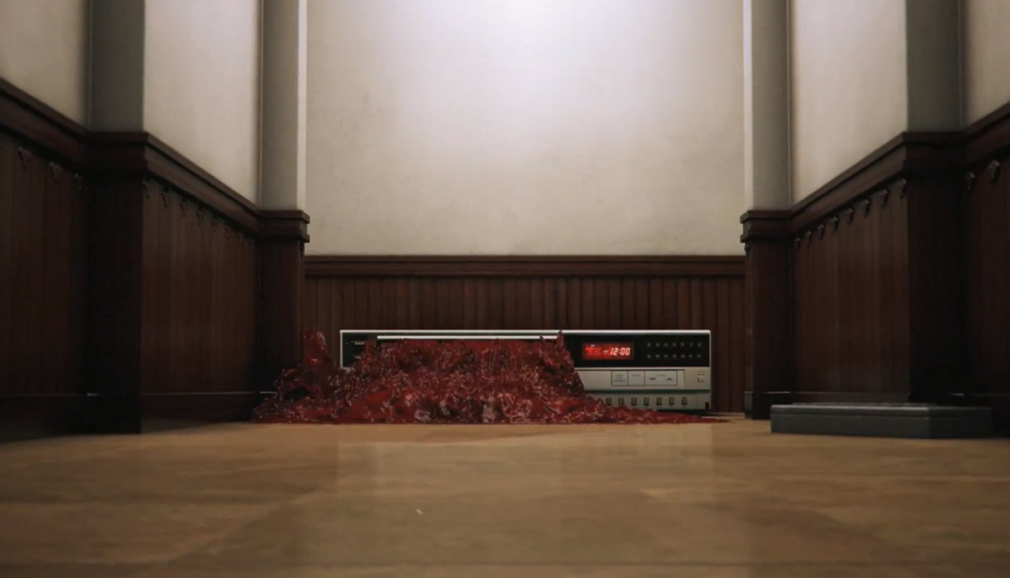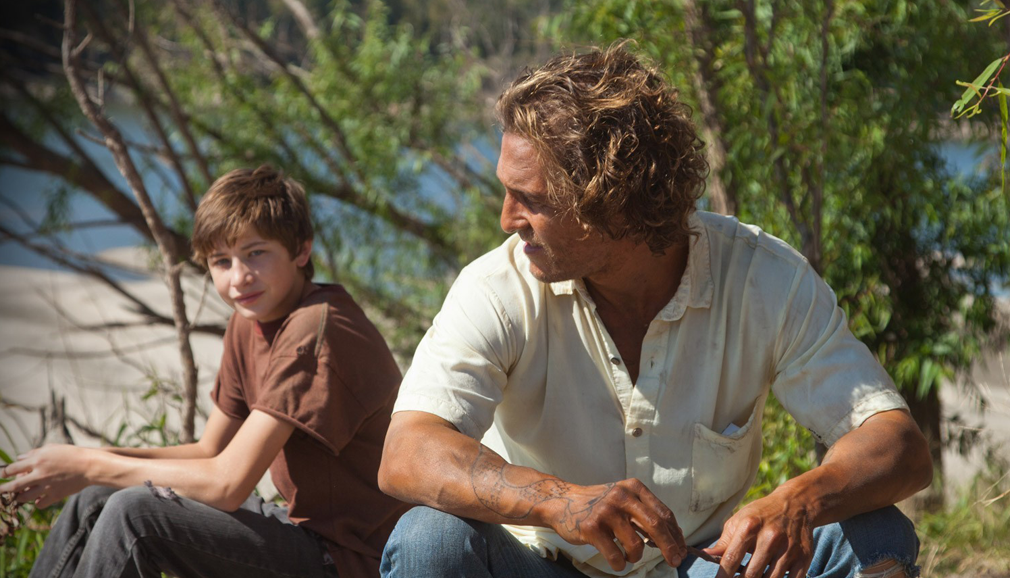We celebrate the end of the year the only way we know how: through lists, essays, and mixes. Join us as we explore the music and films that helped define the year. More from this series
While the filmic landscape of 2012 A.D. was characterized by apocalypses, our favorite films this year pointed toward a triumph of the real, reveling in our fucked up world instead of imagining its destruction. Directors turned their lenses (usually warped ones) to the immediate and the present — or at the very least, the rippling continued effects of the past (12 Years a Slave). Sure, our list includes some fantastical films — most obviously ones about robots (Pacific Rim and World’s End), but also mind-controlling worms (Upstream Color) and nearly everything else (Wrong, The Rambler). But overwhelmingly, in 2013, shit got real.
More documentaries (a half dozen!) ranked in our favorite 30 than any previous year, with two in our top five (Act of Killing, Leviathan). And whether dismantling documentary veracity in search of personal truths (Stories We Tell), foregoing narrative altogether (Bestiaire, Leviathan), or limiting themselves to found footage (Let the Fire Burn), all the docs (not to mention Everything is Terrible’s found-footage collage double feature) on our list manipulated form in search of new ways to represent our world.
Meanwhile, the dismembered scraps of traditional documentary techniques littered our favorite fictional films, which employed found footage, mockumentary, non-actors, vlogs, and voyeurism to show us such horrors as the wreckage of post-tsunami Japan (Himizu), school shootings (The Dirties), sex tourism (Paradise: Love), economically stagnated suburbs (Pavilion), nerds (Computer Chess), and Florida beach culture (Spring Breakers). Even in the films that fell solidly within the formal confines of fiction, subject matter was immersed in large-scale contemporary concerns (Drug War, Mud, Frances Ha), while the generic conventions of realism were reworked for contemporary audiences (Sun Don’t Shine, Before Midnight).
As always, we had a difficult time narrowing our list down to 30 films: Hors Satan, Pain and Gain, Beyond the Hills, and Escape from Tomorrow all deserve honorable mentions. But this year, our staff had more consensus than ever about the films we loved. Maybe it’s just that we live in a weird time, both IRL and filmically, and our list reflects that. I mean, a release with no press became one of our favorites (Black Box), a Harmony Korine film played in nearly every multiplex, Pacific Rim’s kaiju washed ashore, and, amazingly, we actually laughed at stand-up comedy (Everything is Terrible: Comic Relief Zero).
30. A Touch of Sin
Dir. Jia Zhangke
[Kino Lorber]

The four narratives that combined to form the vividly engrossing A Touch of Sin shared an unhappy view of contemporary China. Jia Zhangke’s vignettes each explored the toll exacted by persistent injustices in his homeland; in one, local corruption so broke a man that only a killing spree could get him to smile; in another, an unemployable romantic’s only achievement was his Foxconn-style suicide. Jia’s filmmaking was hardly as lugubrious as that, however. Flourishes of genre and astonishing images of industrial and otherwise non-urban China kept us immersed as assassins returned home and humiliated mistresses sought refuge. Jia’s indictment refused to remain uncomplicated, with elements of traditional (the Beijing Opera) and contemporary (socializing with an iPad) culture included not so that they might be condemned but because they offered fleeting respite. And yet we couldn’t emerge from the film without retaining a vision of a country made deeply ill by its industrial progress. A Touch of Sin spoke full-throated to the ongoing punishment being meted out on the masses shuttling towards survival employment throughout China, bellowing at a despondent crowd, “Do you understand your sin?” Jia’s ability to wring masterful storytelling from such a toxic situation provided perhaps the most comprehensively moving filmgoing experience of 2013.
29. The Dirties
Dir. Matt Johnson
[XYZ Films]

The world premiere of The Dirties at Slamdance came just weeks after the Sandy Hook Elementary School shooting, and there was a lot of apprehension about how a film that humanized a perpetrator of a school shooting would go over. But at the Q&A after the screening, director/star Matt Johnson fired off rounds of depths-tapping insights about the topic, showing thoughtfulness, passion, and compassion and being unafraid to be hilarious. The Dirties was a fearless and frightening movie that grew out of Johnson’s fascination with the Columbine shootings. The conceptual ambition of the film — to draw a line from high school bullying to a shooting in an organic and believable way — was matched by its nervy execution: Johnson and his crew walked into high schools without permission and mingled with real students, shooting scenes surreptitiously. What started out as a sharp, comedic buddy-movie, relying on Johnson’s brainy film-geek energy and charisma, gradually shifted tone as his character alienated his only friend and descended into a kind of relatable madness. As the zero hour approached, he increasingly spoke right into the camera, and you couldn’t help feeling strangely complicit in his actions.
28. Pacific Rim
Dir. Guillermo del Toro
[Legendary Pictures]

I am a liberal arts hack with an appetite I keep cloistered deep in my movie shelf. But no matter how much I banter about Kieslowski or Bergman, no matter how I argue the value of L’Avventura over La Dolce Vita, no matter how strict a diet of documentaries and fringe cinema I consume, an addict-twinge itch asks me: “Why are there no giant fucking robots?” At the pith of my being, I’m still a thirteen year-old Toonami fanboy making models of Gundam Wing robots (yes, it was that bad). Pacific Rim did something flooring: sated my desire to see giant robots live-action fuck shit up. Blockbuster narrative tropes? Don’t care. Static characters? Whatever, Stringer Bell was in the movie. I had no investment whatsoever in any scene featuring an actual human being. The only complaints I had about Pacific Rim were the possibility for more giant robots and the fact Los Angeles wasn’t destroyed. This year, Quentin Dupieux rendered a new vision of French Surrealism. Kim Ki-Duck tore open humanity’s capacity for malice and compassion. Guillermo del Toro had a giant robot cut a monster in two with a sword in the fucking stratosphere. It’s a hard toss for me.
27. Himizu
Dir. Shion Sono
[Gaga Communications]

It wasn’t until a knife-wielding young man jumped onto a stage and interrupted an acoustic set that Himizu really won me over. “Who am I? Tell me please!” the youth yelled as he waved the knife at complete strangers. It’s a question every 14-year-old struggles with, and even as I approach 24, I still don’t have an answer. Himizu detailed the torturous life of 14-year-old Sumida in post-tsunami/meltdown Japan. But Sumida suffered from more than the typical teenage angst and anger (“Ordinary is the best!” he exclaims, a new anthem for emo kids everywhere) that’s to be expected with puberty. Throughout the film director Shion Sono reminded us that life is abusive: a mother deserted her son, a father wished his son was dead, a boy repeatedly abused a young girl who loved him. The ease with which so many of the characters resorted to violence seemed a reactionary response to a new world order in the wake of the tsunami. Some scenes, like when Keiko’s mother revealed a gallows she built for her, were too surreal to be taken literally. But regardless of the reality of these moments, they were representative of an unforgiving, unfair, and unbalanced world — a world Japan entered on March 11, 2011.
26. Room 237
Dir. Rodney Ascher
[Highland Park Classics]

With Errol Morris-like fastidiousness, Rodney Ascher brought forth our first video mixtape inspired and soundtracked by film obsessives. Rather than considering the speakers based on their appearances, the viewer was put in direct play with a constant aural stream of intense reflection, theory, and plum crackpot madness. We were drawn in, made to balk, and often absurdly stuck somewhere in between (like that “impossible window” in Ullman’s office). There were likely some Shining fans who winced as much as they were thrilled to experience a beloved work of art explored in a variety of exhaustive (sometimes exhausting) ways. But Room 237 ultimately emerges as a tribute to an indelible film and to an artist whose meticulous nature fleshed out vivid realms both crude and austere, whose ethereal forms manage to loom larger than the story at hand. Whether or not you bought what was being said, this film took you on a compelling, deliriously unreliable tour through these realms. Throw in that humorous, oddball selfconsciousness (as previously seen in Ascher’s awesome 2010 short The S From Hell) and this film is nothing short of a game changer. Stephen King, Stanley Kubrick, and Rodney Ascher are all responsible for some the most uncannily mesmerizing works we are lucky to have to get lost in. Thankfully, Ascher is only beginning to show us what he can do.
25. Viola
Dir. Matías Piñeiro
[Cinema Guild]

As we watch an all-female cast play, and replay, a certain scene from Twelfth Night (don’t worry if you missed a few lines), one can sense the contact high of the language’s courtly slipstream, but also the proud eyes behind those words rolling off the tongue, and the hungrier eyes receiving them. The affected appraisals of Shakespeare’s dialogue soon drift into a backstage debate on modern relationships, where, upon inviting us to ogle his insanely attractive cast, director Matias Piñeiro switches to vernacular: should one enter a state of mental separation from a lover, loving less; or do you go “all in”? Likewise, you can decide whether to try and decipher Piñeiro’s narrative sleight-of-hand, as the fluidly roving camera and direct sound constantly suggest more than the loosely defined network of relationships on screen; or whether to simply enjoy its many sensual and intellectual pleasures. Weirdly specific and unceasingly warm, Viola’s evasive structure invariably suggests intrigue, but honestly, the first time I watched it, it felt like someone finally made the crossover product for lovers of gossip columns, Romantic literature, and Karagarga. The second time I realized there was no better film this year about allurement — the allure of language, cinema, and of human beings.
24. Gravity
Dir. Alfonso Cuarón
[Warner Bros.]

As someone who’s basically afraid of anything cold, expansive, or improperly lit, Gravity was my worst nightmare. This free-spinning visual gargantuan followed an insanely on-point marketing campaign, punctuated memorably by Sandra Bullock’s panicked gasps as she hurtled helplessly into the void. Director Alfonso Cuarón turned an estimated $100 million budget into an overwhelming mise-en-scène of splintering space debris and rapid day-night shifts across the looming face of Earth, all shot with astounding detail. As Dr. Ryan “I Hate Space” Stone, Bullock gave surreal, barely conceivable moments an agonizing familiarity, and provided a canvas for 3-D technology to intimately connect with weightless surroundings — when Stone finally cries, the tears lift off her skin and float towards the camera (speaking of: whoa.) Gravity’s relatively simple screenplay also helped highlight the obscure origins of the survival instinct: does it stem from a sense of obligation? A selfish impulse? For our part, is the spectacular hubris of movie-making all it takes to convince us to strap in for 91 minutes of pure emotional torture? Whatever the implications (and Neil deGrasse Tyson’s protestations aside), Cuarón’s magnum opus of ocular gluttony and body-punishing stress breathed visceral life into the movie-going experience.
23. Mud
Dir. Jeff Nichols
[Lionsgate]

To borrow an expression from a colleague here in Portland, Oregon (Matt Singer of Willamette Week), we are in the midst of a McConnaissance: the abrupt and welcome shift in the career trajectory of one Matthew McConaughey that has found the 44-year-old actor taking roles that are challenging, sometimes daring, and worthy of his remarkable abilities. For all the flash and physical changes that he brought to other films, his work in Mud is really the crown jewel of this fantastic run McConaughey has been on. It’s a simple enough part — a fugitive waiting on a small island for his chance to connect with a former flame and escape — but he imbues it with the perfect shades of mystery and danger and his incredible charisma. You understand completely why the two boys that find him on the island keep returning to him with food and supplies to help in his flight. McConaughey is aided here by masterful writer/director Jeff Nichols, a filmmaker who understands the delicious allure of doing potentially unsafe things when you’re young. His clear-eyed vision does a great job of capturing both the thrills and the horrible consequences of these actions in this brilliant bildungsroman.
22. The Rambler
Dir. Calvin Reeder
[Anchor Bay Films]

In the opening scenes of The Rambler a man has just been released from prison: blue jeans, hat, sunglasses, red filter cigarettes, background country music. But make no mistake, these clear pinpoint references will soon be lost in the barrage of bat-shit insanity that follows. That is not to say The Rambler loses its place. If it’s true that art must communicate something to the audience, the path chosen by Calvin Reeder is a strange and difficult one — to quote FBI special agent Dale Cooper from Twin Peaks. The rapid speed at which the film flows made us feel as if we were switching channels in a demonically possessed TV set: surreal mise-en-scène, late night exploitation cinema, crazy scientists and their inventions, roadside shows, nightmarish horror, mummies, exploding heads. Gratuitous gore. And a girl (there has to be a girl) with whom our hero finds brief moments of peace. The line between uncompromised personal view and self-indulgence is very thin, and it’s no surprise The Rambler divided audience and critics alike. Calvin Reeder is one of the most promising contemporary American filmmakers currently pushing the boundaries of challenging, experimental cinema.
21. Post Tenebras Lux
Dir. Carlos Reygadas
[Strand Releasing]

Carlos Reygadas’s meditation on family, fear, and desire didn’t so much contain a narrative as it collected images. Post Tenebras Lux explored moments in which memory and dream became indistinct, and in doing so permitted us to acknowledge that we possess such a multitude of bodies and fears during our lives, and that to discuss them as a single unbroken continuum is frankly dishonest. Whether offering us a small child wandering alone after dark in a field far from home, or a woman having her first group sex experience in a crowded bathhouse, or a man so ridden with guilt that he yanks his own head off, Reygadas announced that he’s ready to celebrate a world as unsettling as ours. A deeply autobiographical film, Post Tenebras Lux dismissed actorliness in favor of regular human mundaneness, a choice that permitted Reygadas to linger on the organic choices of his actors. The rewards were manifold, and the film populated itself with images of unalloyed comfort and brutality. The Mexico Reygadas’s characters inhabited, complicated by class yet seemingly beyond civilization, offered natural beauty and human cruelty in equal measure. With Post Tenebras Lux, the director wrought an unflinching fantasy that explored the contours of desire and traced an unseemly world we can’t help but inhabit.
We celebrate the end of the year the only way we know how: through lists, essays, and mixes. Join us as we explore the music and films that helped define the year. More from this series
